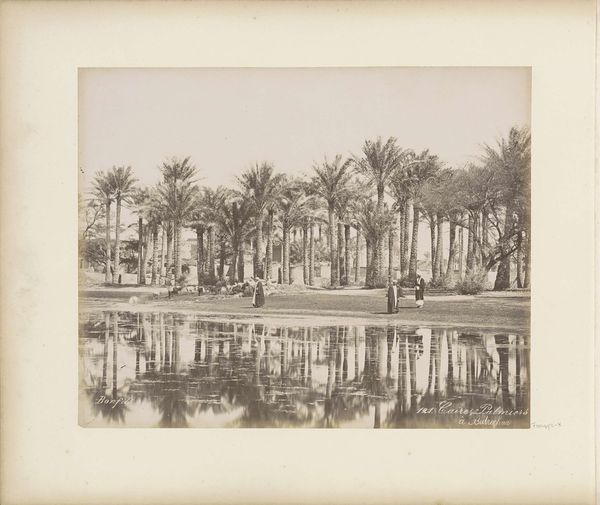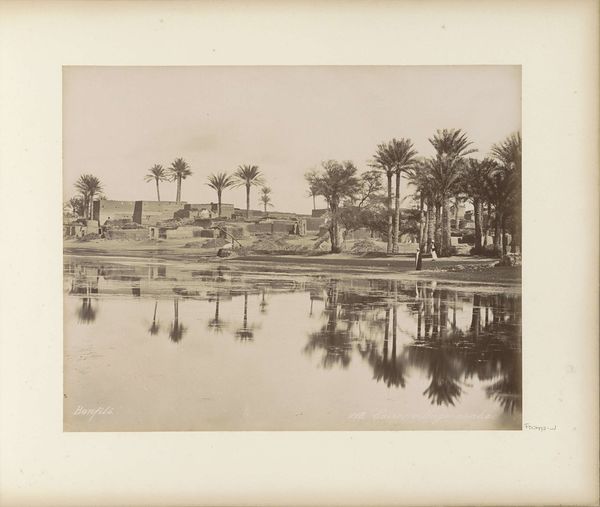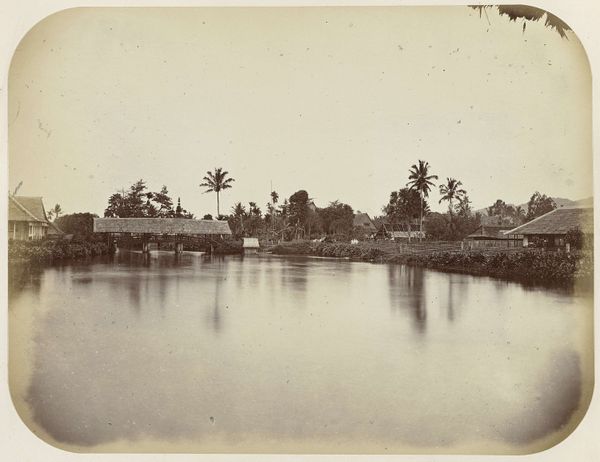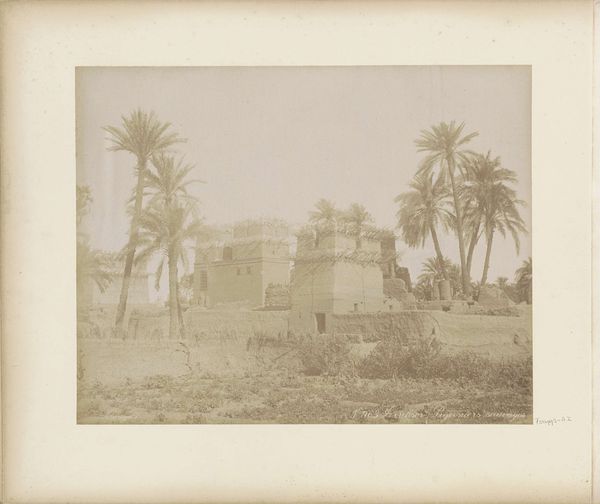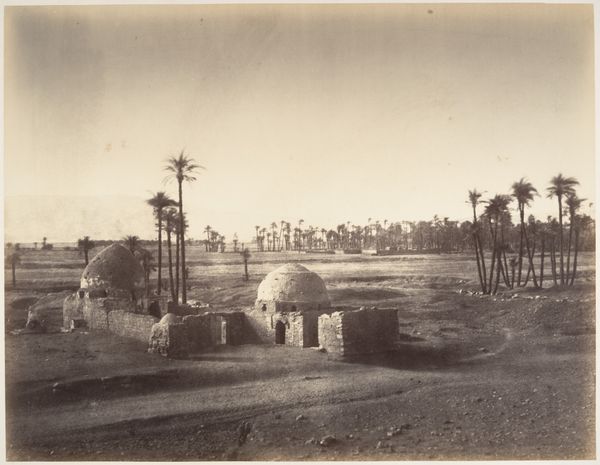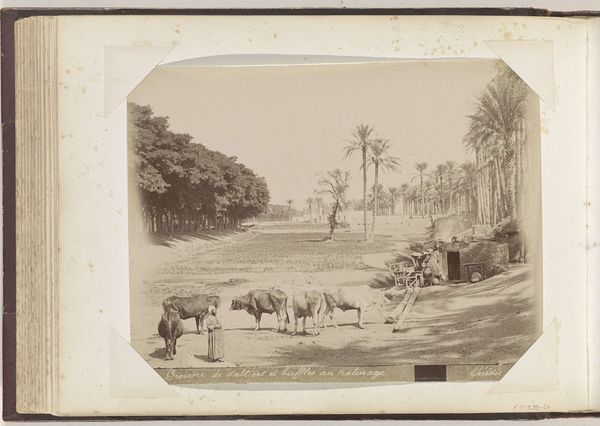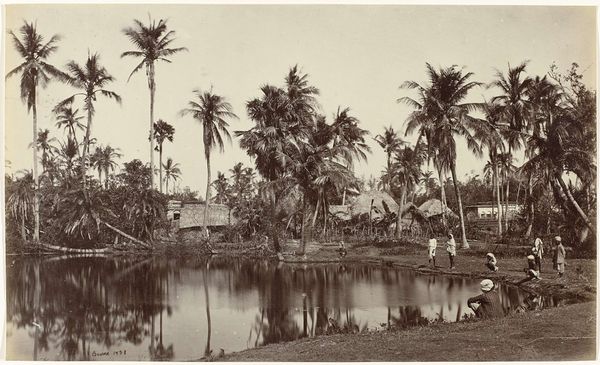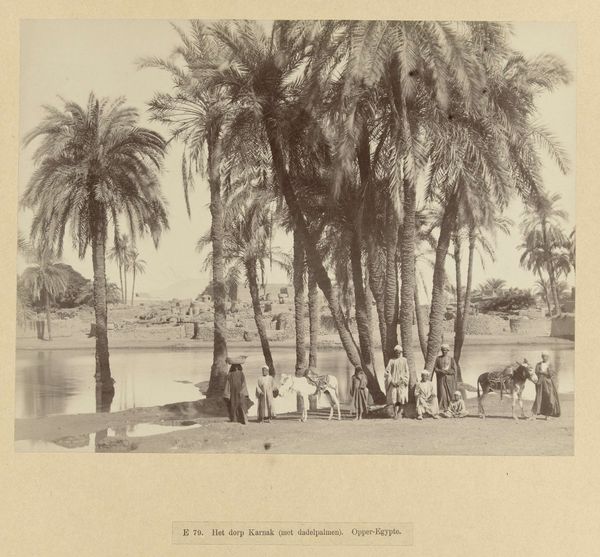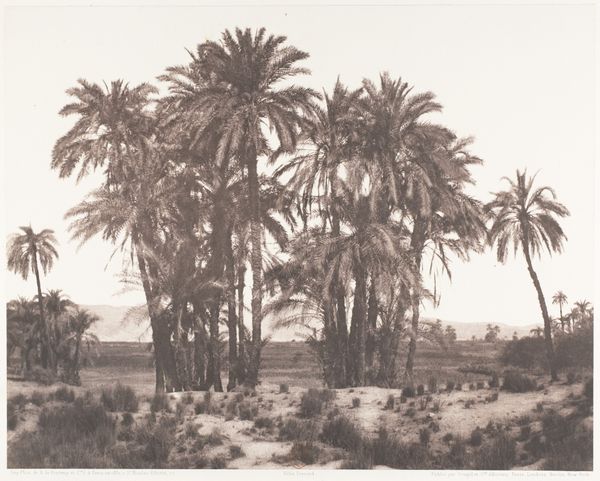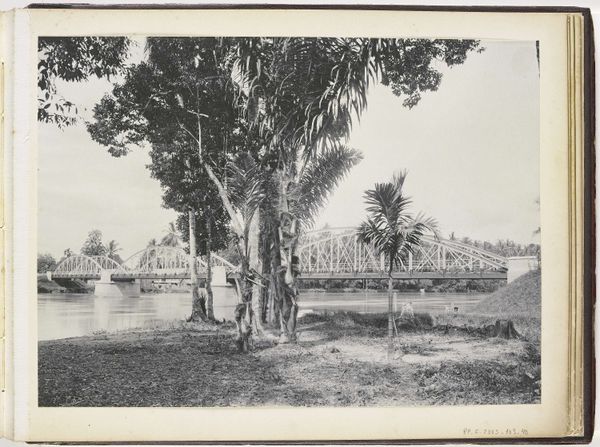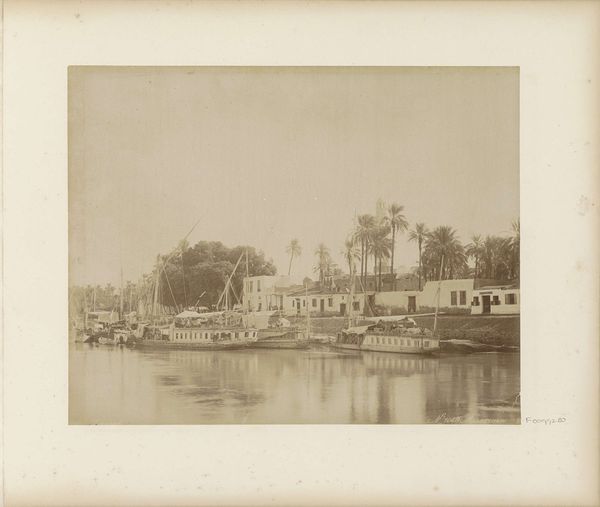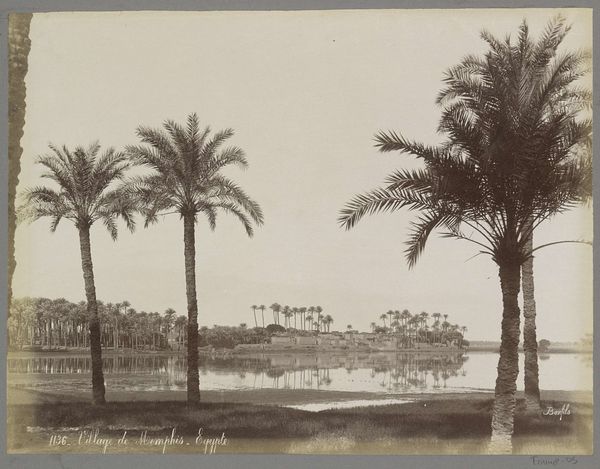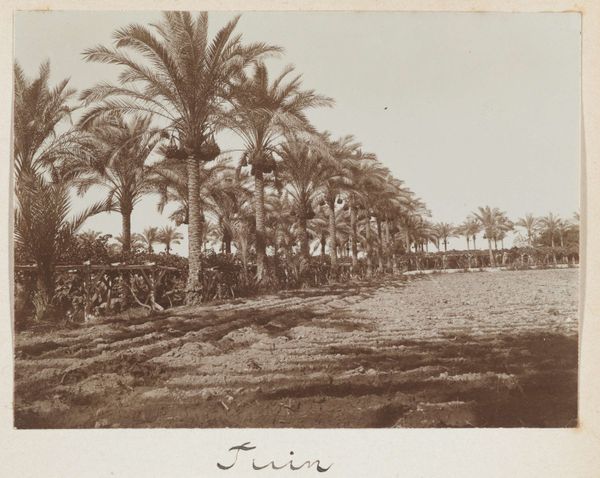
photography, gelatin-silver-print, albumen-print
#
landscape
#
ancient-egyptian-art
#
photography
#
orientalism
#
gelatin-silver-print
#
albumen-print
Dimensions: height 220 mm, width 277 mm
Copyright: Rijks Museum: Open Domain
Editor: We're looking at "Ondergelopen palmbomen bij piramides," or "Flooded Palm Trees Near Pyramids," a photograph taken by Maison Bonfils sometime between 1870 and 1898. It looks like an albumen or gelatin-silver print. What strikes me is how the pyramids, icons of permanence, are juxtaposed with this flooded landscape, implying change and impermanence. How do you interpret the scene? Curator: That's a great starting point. I see this image through the lens of Orientalism, a Western fascination with and often romanticized depiction of the "exotic" East. These photographs, often staged, shaped Western perceptions of Egypt. Editor: Staged? You mean, the flood might not have been a spontaneous moment captured on film? Curator: Possibly. Consider the technical challenges of photography at the time. The photographers might have carefully selected a location during the annual flooding of the Nile. And observe the figures on the camels – they become part of this constructed "Oriental" scene, fitting Western expectations. Do you think the Western audience would have understood the reality of the annual floods? Editor: Probably not. The image, with its serene beauty, might obscure the actual disruption the flooding caused. So, this isn't just a photograph; it's a cultural artifact reflecting the power dynamics between the West and the East. Curator: Exactly. The photograph enters circulation to be purchased by tourists and disseminated back in Europe, strengthening an understanding, or perhaps, a misunderstanding, of Egypt. The "truth" of the image becomes secondary to the story it tells to its intended audience. Editor: It’s eye-opening to think how much cultural context is embedded in what appears to be a simple landscape photo. I’ll never look at these old photographs the same way again! Curator: Indeed. Art serves not only as documentation but also as a historical narrative, revealing more about those who create and consume the imagery than about the place itself.
Comments
No comments
Be the first to comment and join the conversation on the ultimate creative platform.
